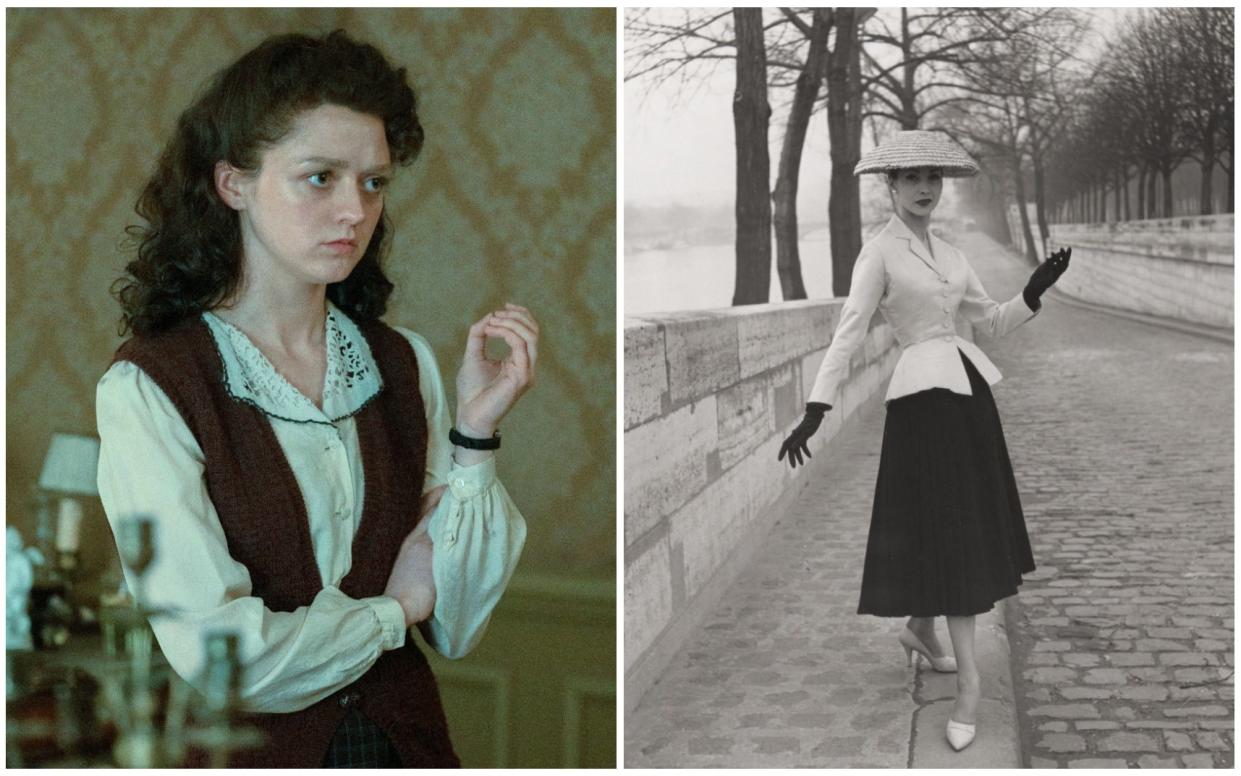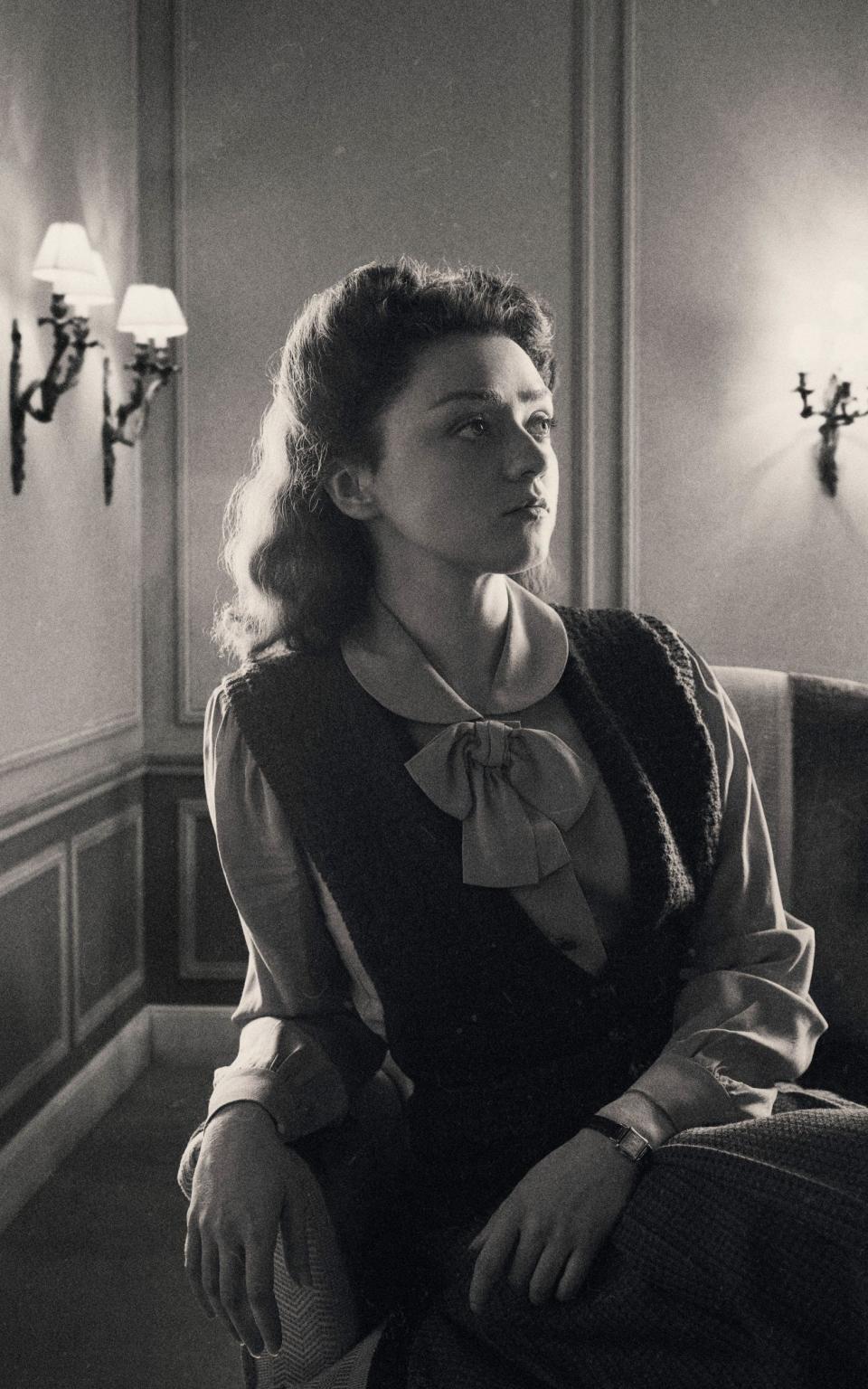The sorrow and saga behind Christian Dior’s influential fashion house

“I keep looking for the great collection to rise from the ashes of the war,” declares Glenn Close, acting as the legendary Harper’s Bazaar editor Carmel Snow in the upcoming television series The New Look.
As Nazi occupation in Paris came to an end in 1945, the city’s once-cherished couture scene was desolate. Many houses, including Chanel, had shuttered, while the few names that had continued trading and (knowingly or naively) selling ball gowns to Nazi wives were now somewhat tainted in the eyes of the newly liberated French customer.

Against this backdrop, Christian Dior launched his debut collection in 1947. The reception was rapturous, the lines considered green shoots. Snow and her peers had found the revolutionary they sought. “My dear Christian,” Snow famously said, in real life, “your dresses have such a New Look”. The collection and its reception changed the way we dress.
The New Look, which launches on Apple TV on Feb 14, charts Dior’s beginnings as one of the world’s best-known couturiers. The director Todd A Kessler (the writer behind Damages, who began his career on The Sopranos) has assembled a stellar cast – Ben Mendelsohn as Monsieur Dior, Juliette Binoche as his rival Gabrielle ‘Coco’ Chanel, John Malkovich as his former employer Lucien Lelong, and Close as their promoter, Snow. Acting legends play fashion legends, match for match.

Behind the glamour, though, the series explores the events from this unique turning point in fashion history which have been “never-before-dramatised”, Kessler tells The Telegraph. “The extraordinary circumstances that led to Christian Dior launching his first collection in 1947 was the inspiration for The New Look. The four-year-long Nazi occupation of Paris and the horrors of the Second World War that touched nearly everyone alive at that time, led to resurgence of creativity.”


Across 10 episodes Kessler imagines, romanticises and amplifies the camaraderie and rivalry between Dior and his contemporaries (particularly Chanel, Pierre Balmain and Lelong). He unpicks the difficulties each personality navigated during the Second World War – the question of whether to continue designing, and for clients on which side, the grapple of assisting the efforts of the French resistance, while maintaining face as high profile individuals. Many of Paris’s glittering fashion leaders were attractive names that Nazi leaders wanted to meet and, in cases, relocate to Berlin.
So how much of the tale is true? Dior began his career as a gallerist, then an illustrator, before accepting a job as house designer with Robert Piguet in 1938. After being called up for military service in 1939, he returned to Paris to design for the house of Lucien Lelong.

Kessler’s drama picks up here, in 1943, as Dior and his co-worker Pierre Balmain, apparently tired of designing for another’s name and struggling with the moral dilemma of accepting wages in return for making dresses, when the only people left having parties were the Nazis.
To zoom in on this particular moment in time is richly complex – and therefore ripe for dramatisation. Kessler did seven years of research “not only on the personal stories of Dior and his contemporaries (Chanel, Balenciaga, Balmain, Lelong, Givenchy, Pierre Cardin, to name but a few) but also on the two decades in France leading up to the Nazi Occupation of Paris,” he says. “It was important to me to understand as best I could the French perspective on life, on liberty, and what it then meant to have that taken away by the Germans.”
Chanel’s allegiances during the war seemed conflicting – it is known that she was recorded as a trusted source by Nazi authorities in July 1941, using the codename Westminster. Yet in January 1943, it is recorded that she joined the French Resistance as an occasional agent.
She closed her couture business in 1939, and didn’t reopen until February 1954, at the age of 71. By then, Dior was considered a master of couture and the most famous designer in the world – Chanel’s comeback was amped up in the press. “Watch out M. Dior – Mlle Chanel may be one step ahead of you,” the British journalist Jean Wiseman wrote at the time.

Catherine Dior, Christian’s beloved younger sister, played an important role in inspiring the founding of his namesake house. She was an active member of the French Resistance, who was ultimately captured and taken to Ravensbrück in August 1944. Her courageous story, typically, is overshadowed by the phenomenal success of her elder brother. Yet her safe return to Paris in May 1945 contributed to the optimism felt by the designer when creating his New Look, and the fragrance Miss Dior, which was sprayed through his atelier as he delivered his new design ideas.
“Catherine’s return seemed to bring about a change in Christian,” Justine Picardie, the author of Miss Dior: A Story of Courage and Couture, wrote in The Telegraph in 2021. “Having shown no particular ambition to have a couture house of his own, in April 1946 he suddenly found the confidence to do so. When he showed his New Look collection, Catherine was watching in the audience.”

The actor Maisie Williams, who plays Catherine in the series, read Picardie’s book before accepting the role, and listened to chapters of the audiobook on repeat nightly before bed while filming.
“Everything Catherine had gone through is not really commonly known,” Williams tells The Telegraph. “When we think about fashion and we think about Christian Dior we don’t really think about Catherine at all. But the life that she lived and the impact that she had was such a massive part of his inspiration. I wanted to tell the human story, so that people could connect with the way that she influenced him.”
In his 1957 autobiography, Dior wrote that his “unhappy chapter had ended” when Catherine returned. Buoyed also by seeing Pierre Balmain leave Lelong and set up his own company, he followed suit. He visited a fortune teller, secured financial backing from the Boussac group, and considered it a seal of fate when the building he had admired at 30 Avenue Montaigne came up for lease.
“My optimism enabled me to forget temporarily that we were still living in the aftermath of a terrible war,” Dior reflected in his memoir. “Traces of it were all around me – damaged buildings, devastated countryside, rationing… and less serious, but of more immediate interest to me, hideous fashions. Hats were far too large, skirts far too short, jackets far too long, shoes far too heavy.”
He took himself off to stay with friends in Fleury-en-Bière, and in a fortnight sketched the basis of his debut Corolle and En 8 lines – the elegant collections which would later be dubbed “The New Look”. His vision was to allow women, whose access to fabrics had been restricted and who may have spent time wearing nothing but uniforms, to feel feminine and pretty, with rounded shoulders, nipped waists, and full skirts. His dresses had glamorous names – Gala, Vogue, Songe (dream) – to indicate where they were intended to be worn, and how they might make the wearer feel.
“We were just emerging from a poverty stricken parsimonious era, obsessed with ration books and clothes coupons,” Dior later reflected. “It was only natural that my creations should take the form of a reaction against this dearth of imagination.”
That intuition, Kessler says, was the key to success. His series, while dramatised, offers a chance for audiences to understand the sorrow and saga which spurred one of the most recognised labels in the world.
Kessler wants audiences to “hit the pause button”, he says. “We speak these names daily in streets, airports, fashion houses. We should ask ourselves who were the people behind the names we’ve known all our lives?”


